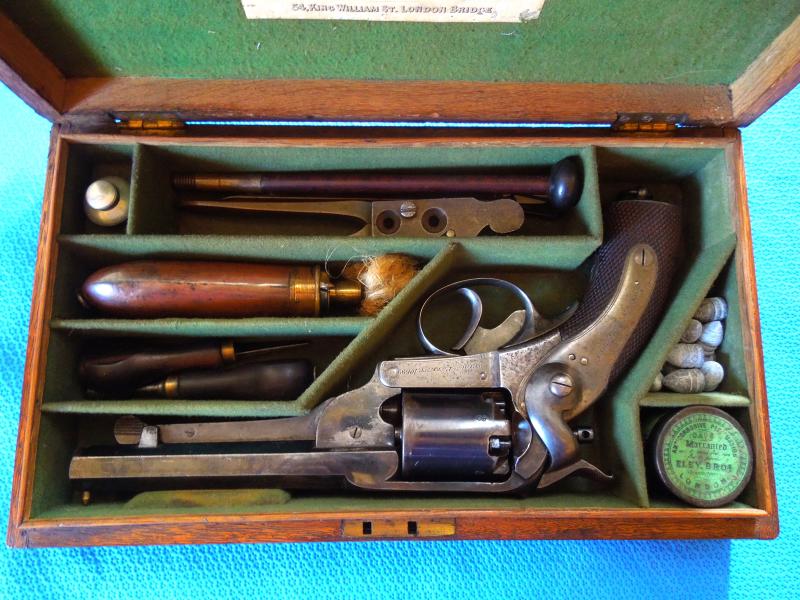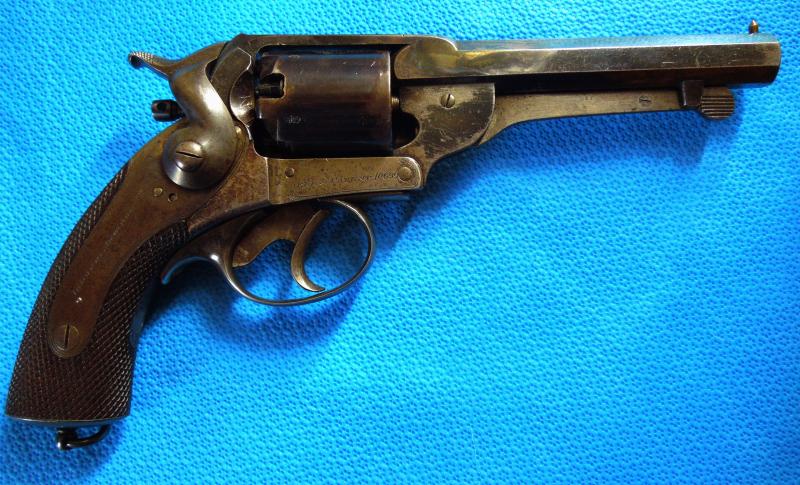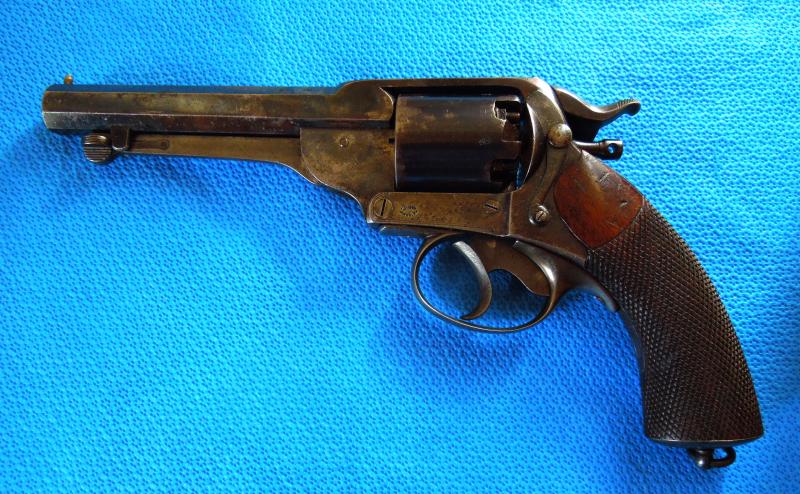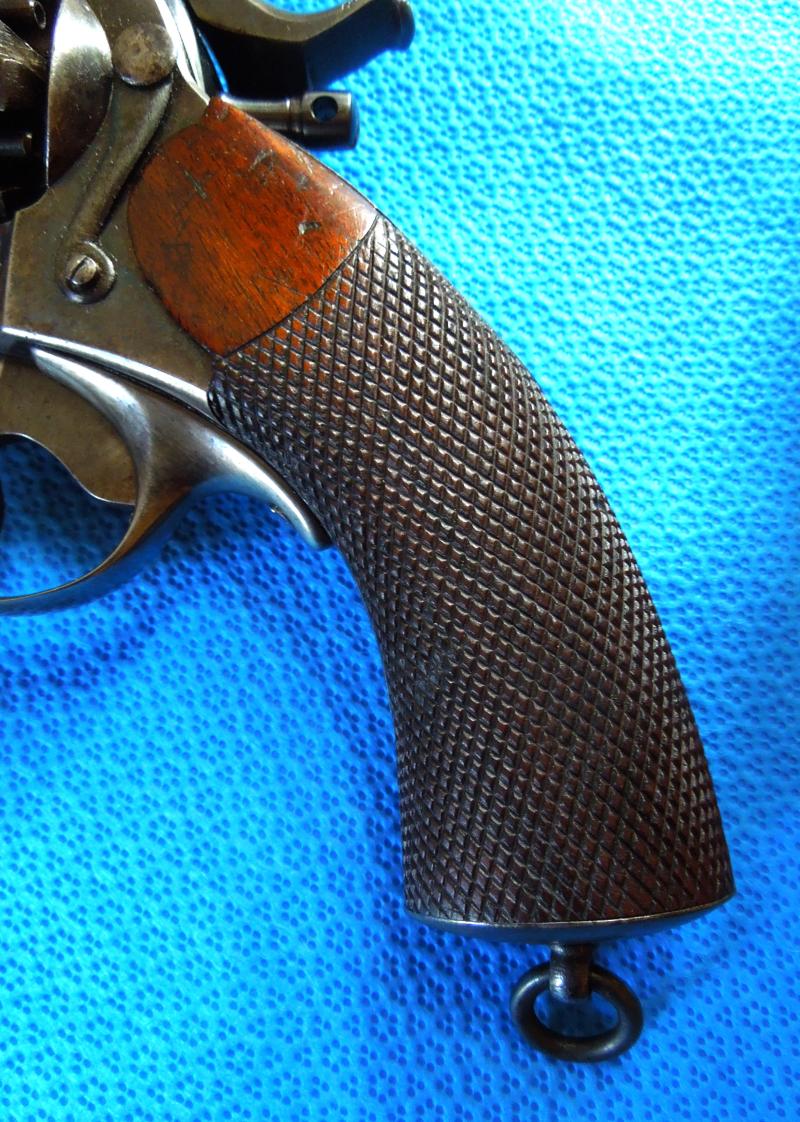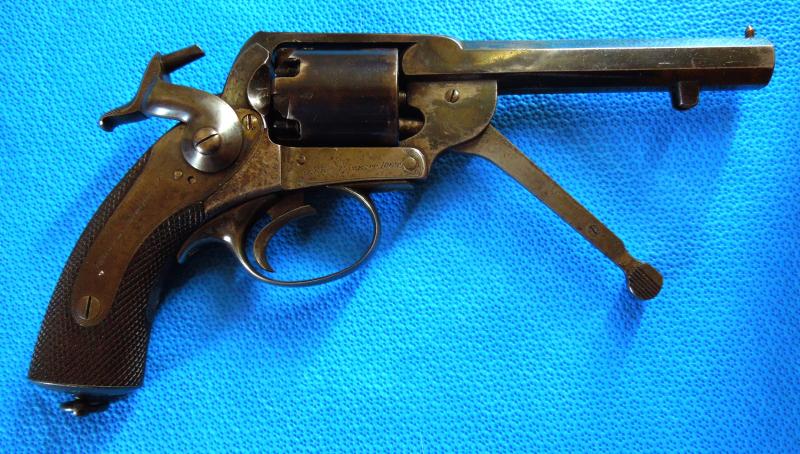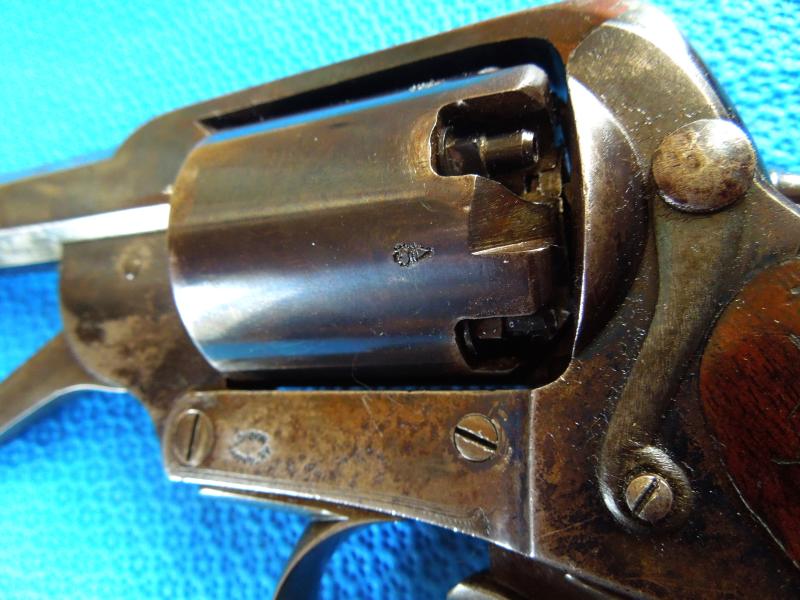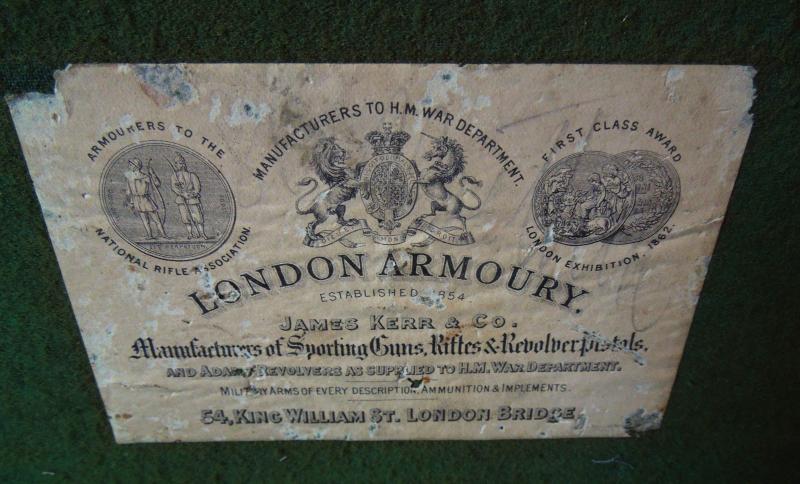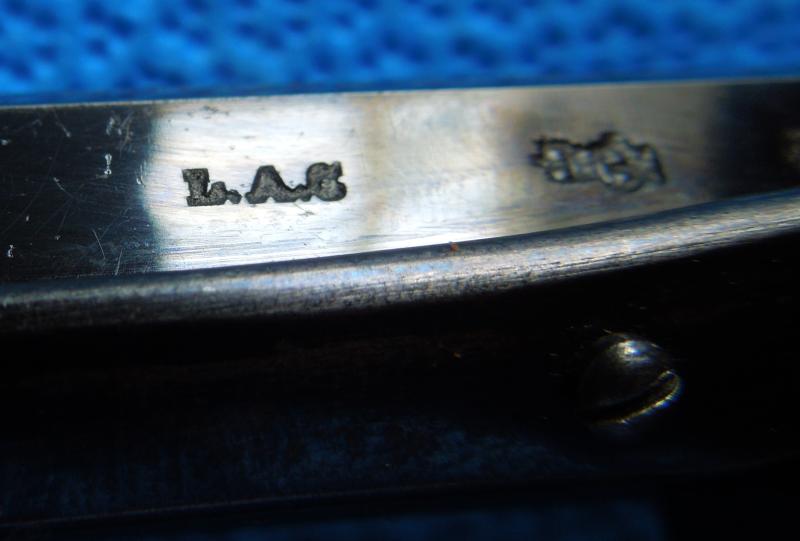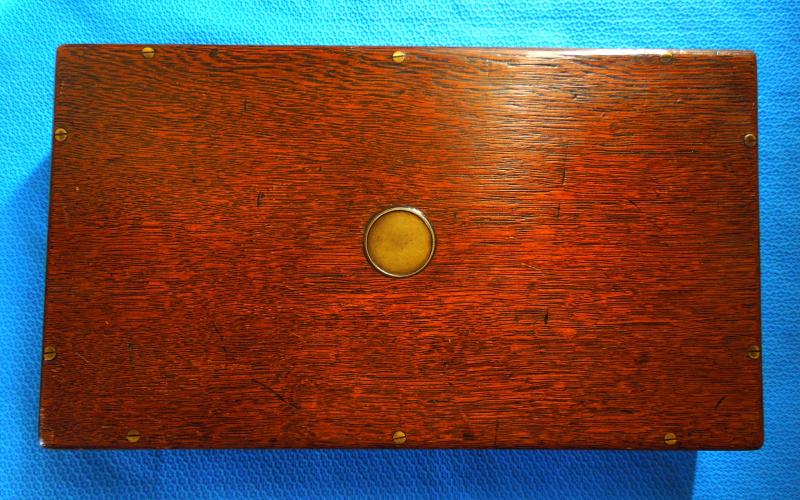Super Kerr Side Hammer Revolver US Civil Ware Era
This is an outstanding cased single-action, Kerr’s Patent single action percussion revolver made by the London Armoury Company of London. This company exported these sturdy, five-shot revolvers to the Confederacy in large numbers during the Civil War. Considered a secondary issue sidearm in the South, the cap and ball percussion revolver was also privately purchased by many Confederate officers for personal use. This revolver features the most popular 54 bore size (.44 calibre) with a five-shot cylinder matched to a 5½” octagonal barrel. Sidearm measures 11” long, weighs 30 oz. and has a one-piece English walnut chequered grip. The Butt strap is secured by two screws and has a lanyard swivel ring attached. An external side spring located on the left side of the frame behind the recoil shield allows for the cylinder to be removed. With the side spring held back, the matching long cylinder pin is removed, and the cylinder drops down and out. Loading lever is thick and flat with a rounded, knurled grip that secures to the bottom of the barrel.
These revolvers were designed with a unique side action lock that could be detached from the revolver to allow easy working on the lock and internal mechanism. I have seen many Kerr’s with broken mainsprings over the years, so this was probably not a bad idea. It is said that a blacksmith could repair a Kerr and blacksmiths are easier to find than gunsmiths.
Kerr’s were first produced in 1859 by the London Armoury Company, founded on February 9, 1856 as a Joint Stock Company whose primary investors included well known makers Robert Adams, Frederick Edward, Blackett Beaumont, William Harding and James Kerr, with Adams becoming the Managing Director due in large part to holding the largest number of shares of stock. Adams had transferred his revolver patent rights and machinery from a previous business as gun maker in the firm “Deane, Adams and Deane.” Kerr was Adams’ cousin and had worked with Adams previously at Deane, Adams and Deane. Located at 54 King William Street, the London Armoury Company first began production of the Beaumont Adams revolvers, but that enterprise was short-lived due to a conflict between the partners on the focus of manufacture of Enfield pattern 1853 muskets for the British government, as well as for private arms sellers. This decision led to Adams selling his interest in the company and stepping down as Managing Director in 1859. The company directors replaced Adams with Frederick William Bond as the manager and James Kerr as the factory superintendent. Kerr had recently been awarded two patents for an improved version of the Adams patent revolver (Numbers 2896 and 242) (Figure 10). The first Kerr Patent revolver was produced approximately March of 1859 and was tested on April 25, 1859 at the Royal Arms Factory at Enfield.
Details include “L.A.C.” and “a crown over a ‘V’” and “crown over ‘GP’” proof marks and the Lower right side of frame exhibits the engraved “KERR’S PATENT No. 10699” and the same number appears engraved on the cylinder with proof marks. On lower left frame to rear is stamped “LONDON ARMORY”. London Armory company is engraved on the lock This number (10699) is sometimes confused and considered the patent number but it is actually the serial number and is different on every revolver. This serial number is within the range that was exported to the United States in the American Civil War.
The five-shot, unrebated cylinder has all five original nipples that protrude from the back of the cylinder as well as five proof marks clearly stamped on the surface at the rear between the chambers. All frame screws original and not damaged. Mechanics are crisp and tight.
The revolver is presented in its original oak case with a brass roundel ( vacant) on the lid and LAC loading instructions still extant inside the lid. The accessories are all present and correct and include a belted mould for the bullets, a Sykes patent powder flask, tin of Eley caps and cleaning rod. There are some original bullets that are contemporary to the revolver. There is a large amount of original finish extant and this is one of the best Kerr I have seen for many years.
Code: 50686
7250.00 GBP

